Our world runs on liquids. From the oil that fuels our transportation to the chemicals that power our industries, these vital resources keep things moving. But when it comes to moving liquids, there are a couple of things that could go wrong, like spills, for example.
Why Are Spills Bad?
Although a puddle of oil may seem harmless, spillage is more than just an inconvenience. Spills pose safety hazards that put employees at risk, environmental dangers that harm ecosystems, and financial burdens that impact companies. Fires, toxic exposure, slippery falls, contamination; there are more dangers swirling in said puddle than colours.
What Is the Meaning of Spill Containment? 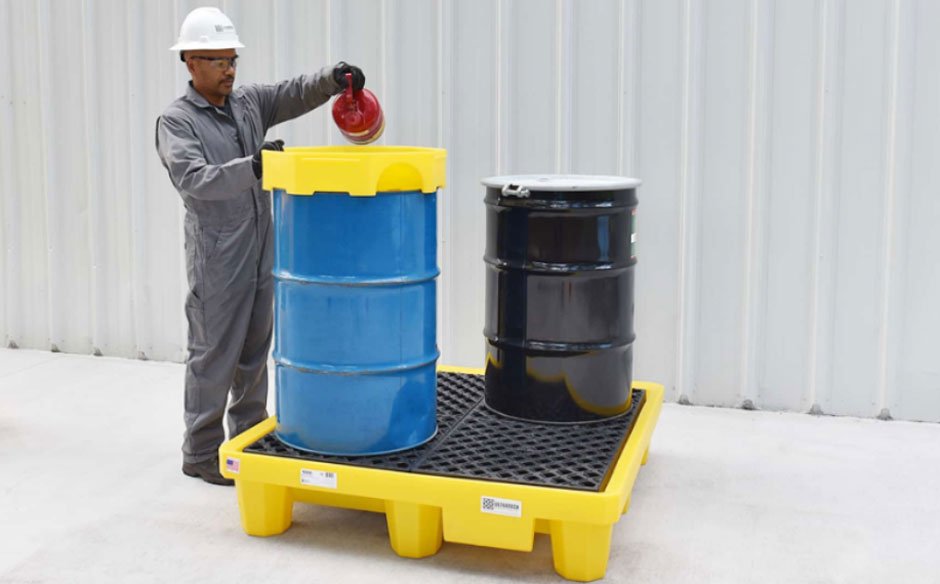
Spill containment is the set of measures required for chemical and spill response in the workplace. In Australia, the storage and handling of industrial liquids are strictly regulated by the WHS (Work Health and Safety Regulation), Environmental Protection Legislation, Codes of Practice, and various Australian Standards.
Failing to adhere to these regulations poses risks and hazards but also teaches an expensive lesson both financially and legally. Companies dealing with cleaning chemicals, industrial chemicals, oils, and fuels must invest in compliant containment control systems and equipment to avoid penalties and legal repercussions but also to protect people and the environment.
While specifics by state may differ, common threads run through Australian regulations, mandating companies to:
- Have spill containment systems at any workplace where hazardous chemicals are used, handled, or stored, ensuring that any spilled or leaked chemicals are held within the workplace, preventing harm to people and the environment.
- Ensure containment control kits don’t create a hazard by combining incompatible chemicals. This includes avoiding reactions that could cause fires, explosions, harmful fumes, and toxic or corrosive damage.
- Ensure the spill control kit facilitates the proper removal and disposal of spills and any resulting waste.
How Are Spills Controlled?
The first step towards effective spill prevention and containment is selecting the right products.
Bunding and Bunded Storage 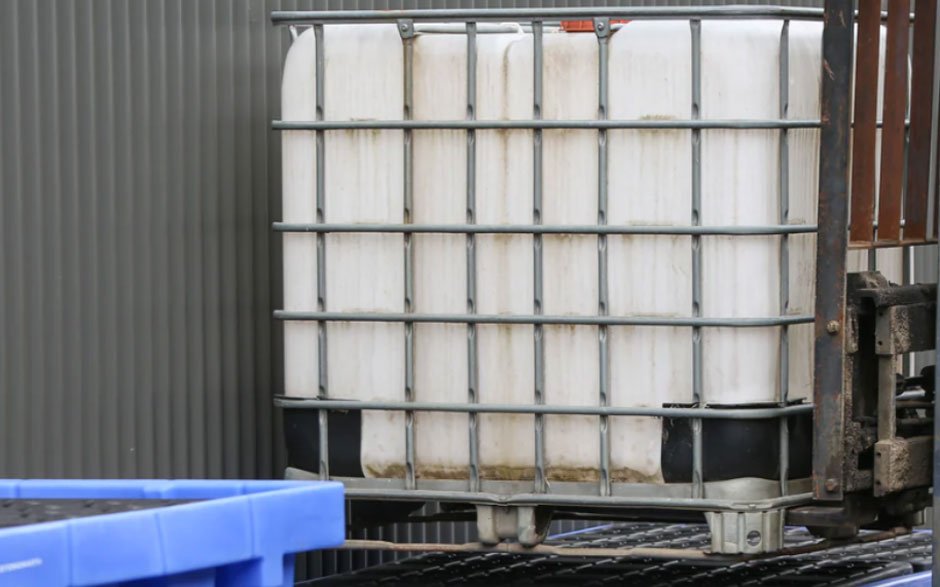
These speciality drums, pallets, trolleys, and shelves feature a bund as a secondary containment area that collects spilled liquids and facilitates clean-ups. When choosing bunded products, it’s important to consider several factors, including:
Chemical compatibility and material suitability – some chemicals can have potential interactions with the bund material, so it’s vital to assess both the properties of the liquid and the material.
- Volume requirements – calculate the potential spill volume you’ll need to contain to prevent overflow.
- Regulations and compliance – check whether certain regulations mandate specific bunding characteristics for your industry and liquids in question.
- Mobility needs – will you need to transport the liquids to another location? If so, consider mobile solutions like trolleys and portable pallets.
- Ease of Use, Maintenance, and Access – consider the design accessibility and user-friendliness to ensure efficient spill containment and clean-ups.
Dangerous Goods Cabinets
Hazardous goods come in various forms, from flammable liquids to corrosive acids and toxic chemicals, each posing high safety and environmental risks. Dangerous goods cabinets provide a dedicated home for these materials, isolating them from accidental spills, leaks, and unforeseen reactions. It’s important to know that not all of these cabinets are created equal.
Different classes address the unique storage requirements of Flammable Liquids, Corrosives, Oxidisers, Toxic Substances and more, ensuring the right level of protection for each type of danger. Choosing the correct solution requires reviewing relevant regulations and safety data sheets for responsible and compliant storage and handling.
Universal, Chemical, Oil, and Fuel Spill Kits 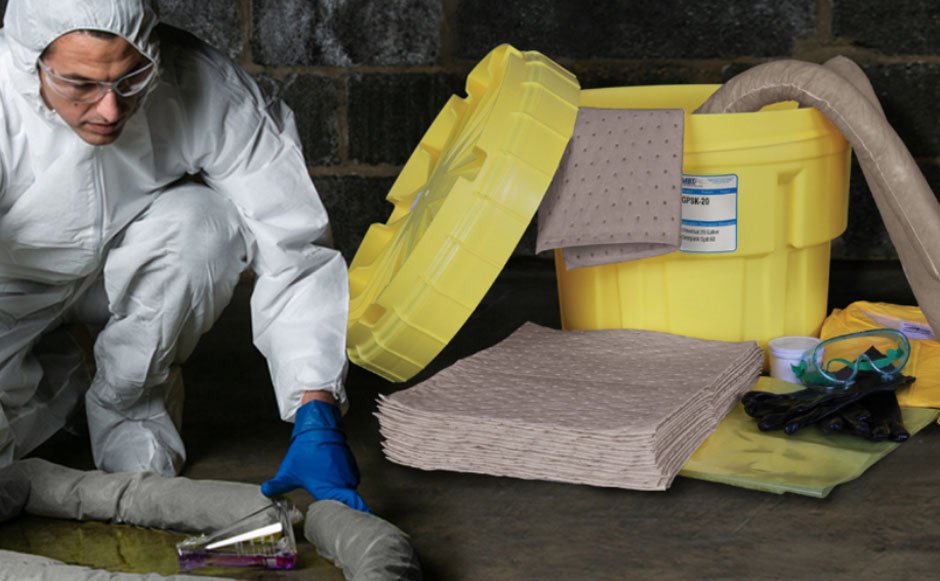
When a potential disaster strikes in the form of a spill, time is of the essence. Spill kits provide an efficient and cost-effective solution for immediate response, ensuring rapid containment, clean-up and prevention of the spread of hazardous materials. These kits typically feature bioactive absorbents and additional spill-control supplies such as industrial brushes and pans, disposal bags, wheelie bins, gloves, etc.
To suit different needs and applications, spill kits vary in type and capacity. Universal spill kits are suitable for most liquids used in factories and workshops. As the names suggest, chemical kits are designed to handle aggressive liquids, whereas oil and fuel spill kits are used for cleaning non-water soluble liquids.
In terms of size and capacity, these can range from small, around 5-25 litres, to large up to 240 litres and beyond. Deciding how big your spill kit should be is easily calculated by considering two key factors: potential spill volume and absorbent capacity of the kit. However, it’s crucial to factor in a safety margin for better preparedness. Don’t choose a kit that barely covers the potential spill volume.
What Are the Steps to Respond to a Spill?
Having the right equipment readily available is only one part of an effective spill control plan. Although the steps may vary depending on specific situations, here’s a general guideline that can apply to emergency and non-emergency scenarios.
Assess the Situation
Time may be of the essence, but don’t jump straight into cleaning. First and foremost, you should identify the spilled liquid, its potential hazards, and the severity of the spill. This will help determine whether you have an emergency on your hands, and dictate your further course of action in selecting the proper spill control materials and following procedures.
Protect Yourself and Others with PPE
Depending on the type and severity of the spill, you may need to gear up with proper personal protective equipment. This could include gloves, respirators, goggles, hazmat suits, etc.
Stop the Source of the Leak
Whether it’s a piped leak, ruptured hose, leaking tank, or overturned container, you need to take appropriate action to halt the flow before initiating clean-up. Otherwise, your effort, time, and resources would be wasted, potentially amplifying the spill’s reach and its consequences.
Contain the Spread
The next step is to stop the spill from spreading with absorbents or other materials as needed, followed by cleaning, decontamination, and disposal. Remember, safe disposal of materials is crucial to preventing further harm. This includes both the containment supplies and disposable PPE used to handle the incident.
Report and Document
Depending on the severity and type of spill, the person responsible for WHS may need to report it to relevant regulatory bodies.
Restock for Future Preparedness
Last but not least, since spill response is not a one-time event, you should restock your kit and revisit your response plan to see whether changes are needed to address potential incidents in the future.

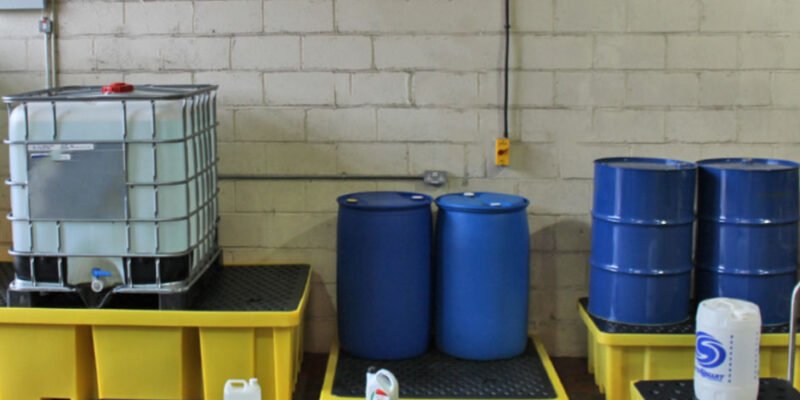




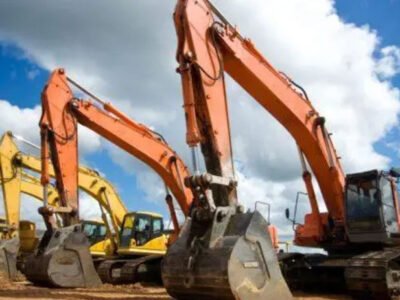








Comments